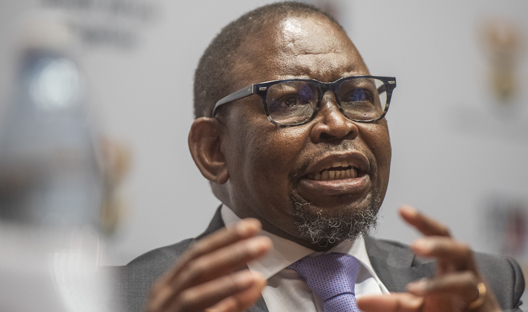Receive Focus insights straight to your inbox
A much-anticipated event on the government calendar, the State of the Nation Address (SONA) delivered at 7pm on the 10 February will provide an update on government’s policy focus and the implementation of its economic plans, specifically the Economic Reconstruction and Recovery Plan (ERRP).
So far, the rollout of the ERPP has been heavy on proposals, with the implementation of growth-enhancing structural reforms slow. The upcoming address is also expected to repeat similar themes to last year’s including building an ethical, capable state and combatting corruption and state capture. Ramaphosa is also expected to indicate the next steps following on from the Zondo commission.
We expect the President to address progress made in combatting Covid-19 (30 million vaccine doses administered so far) and in alleviating its effects on South Africa. He will also no doubt mention the Social Relief of Distress (SRD) grant that is eventually likely to see further extension into a form of Basic Income Grant (BIG), and will address social issues and concerns, and provide updates on budget plans (expenditures).
But we’re unlikely to hear of any enactments that substantially reduce the smothering regulatory burden that limits the growth of SA’s private business sector.
Limited progress on the ERRP
The ERRP progress report states that government has “committed R100 billion over a decade from 2019/20 to the Infrastructure Fund to leverage private sector and development finance, with R24 billion allocated over the 2022 Medium Term Expenditure Framework (MTEF) period”. The report goes on to say that “the review of public-private partnership regulations recommends simplification of the regulations, eliminating delays in approval and implementation, and standardising project preparation; and building capacity at all levels of government. These will be implemented from early 2022”.
What are the main concerns heading into SONA?
While SA is trying to improve its state finances and avoid further credit rating downgrades, it is not yet out of the woods as far as the credit rating agencies are concerned – this despite Fitch’s recent change of outlook from negative to stable. The agencies’ key concerns are:
1) SA’s low economic growth rate,
2) High expenditures relative to revenues, and
3) The faltering pace of fiscal consolidation.
SA’s economic growth is expected to be only 1.8% year-on-year (y/y) in 2022. It will likely lift toward 3.0% y/y by 2026 as growth-enhancing reforms gather pace, including those in the key electricity sector, which remains a constraint on economic growth. The substantial planned fixed investment in electricity generation, specifically from private sector power producers, will take many years to come on stream and stabilise the grid. In the interim, we can expect further load shedding.
We anticipate that SONA will give some insight into government spending pressures. Planned borrowings and the fiscal deficit were projected lower as a percentage of GDP in November’s Medium Term Budget Policy Statement (MTBPS), and it’s not expected that there will be any upward revisions announced at the Budget on 23 February.
The November MTBPS showed planned government borrowings for 2022/23 sitting at 74.7% of GDP (R4.7 trillion), reaching 77.8% of GDP (R5.5 trillion) by 2024/25. The debt trajectory is only expected to peak in 2025/26, at 78.1% of GDP. Most concerning though is that interest payments as a percentage of GDP will continue to swell, from 2.2% in 2007/08 to 5.1% by 2024/25.
The MTBPS also showed capital expenditure, which fell from 11.6% of GDP in 2010/11 to 7.0% by 2020/21, only increasing by a modest 9.2% by 2024/25. Even this forecast is contingent on government’s ability to bring down the share of expenditure on employee compensation to 30.6% of GDP by 2024/25, from 32.3% in 2020/21 (with a recorded peak of 35.6% in 2018/19).
Some progress has already been made towards fiscal consolidation through reducing current expenditure via civil servant renumeration but not via interest payment or rent on land. After 2024/25, interest payments continue to balloon, lowering the sustainability of government finances.

Get all Investec's insights on the latest Budget Speech and SONA
Our economists, tax experts, personal finance and investment strategists unpack what the latest fiscal measures mean for income, savings and daily expenses of individuals and businesses.

